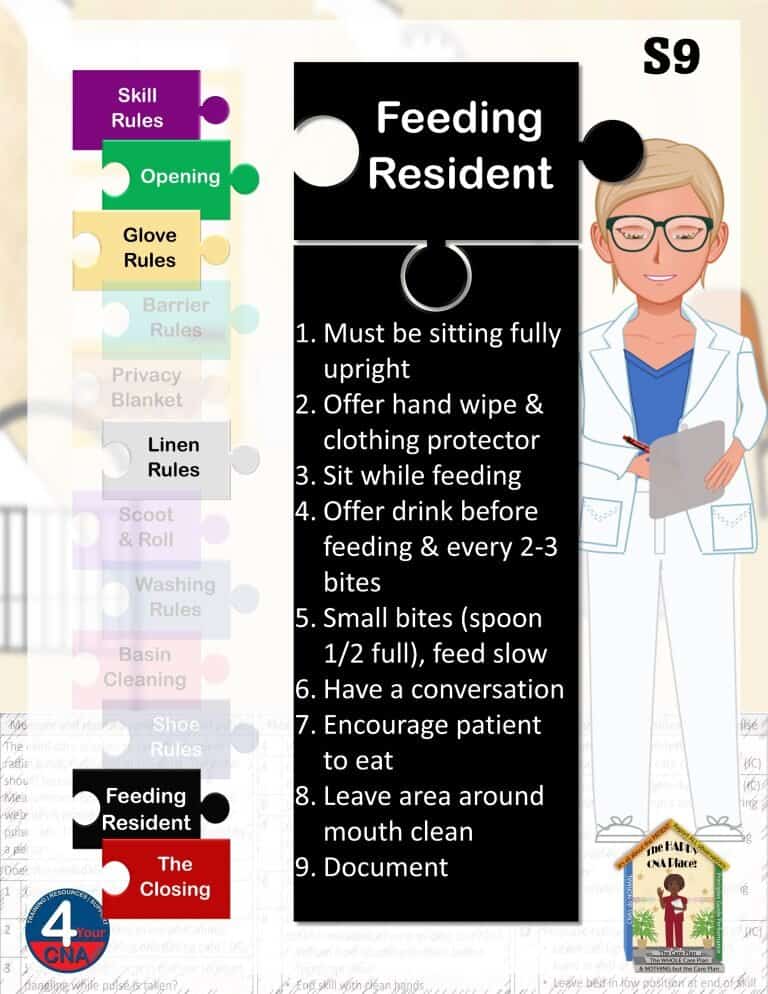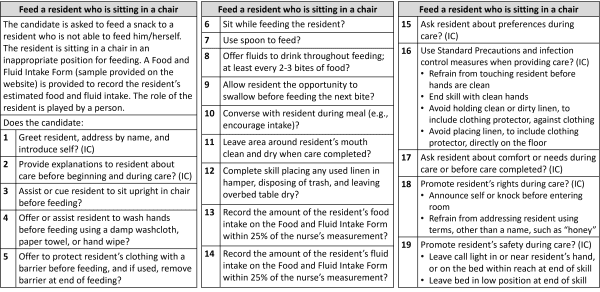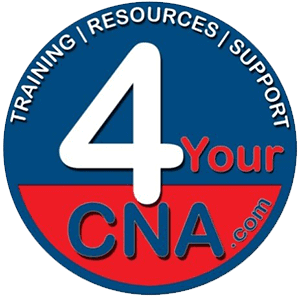Feeding Resident in a Chair
Feeding a resident who is seated in a chair is a routine yet crucial aspect of daily caregiving. Performing this procedure correctly goes far beyond simply delivering nourishment—it plays a vital role in safety, nutrition, dignity, and independence. Here’s why mastering the proper technique is essential:
1. Reduces Aspiration and Choking Risk
Ensuring the resident is upright at a 90-degree angle, helps align the throat and reduces the risk of food entering the airway. Caregivers trained in proper positioning can significantly lower the likelihood of aspiration incidents.
2. Promotes Comfortable, Pleasant Mealtimes
Feeding should be done at a measured pace, with food cut into bite-sized pieces and conversation minimized while chewing. This ensures comfort, supports efficient swallowing, and fosters a calmer dining experience.
3. Encourages Resident Engagement
Engaging residents—asking about their food preferences, allowing them to self-feed as much as possible, and using supportive utensils—enhances independence, self-esteem, and overall mealtime satisfaction.
4. Ensures Safe, Person-Centered Care
The feeding process must align with the individual’s care plan, including any dietary restrictions or special textures (e.g., pureed or thickened liquids for dysphagia). Careful adherence protects the resident and meets clinical standards.
You will need the following to Feed a Resident in a Chair:
- Meal Tray
- Documentation Sheet
- Towelette
- Clothing Protector
1. Preparation & Hand Hygiene
- Read and follow the Care Plan, the whole Care Plan, and nothing but the Care Plan.
- Knock and announce yourself before entering.
- Greet the Resident by name and introduce yourself.
- Explain the task to the Resident and ensure their comfort and consent.
- Wash your hands thoroughly before beginning.
- Assess Glove Rules (Are Gloves required for this Resident?)
- Gather your supplies
- Ensure Resident is Seated properly in chair.
- Sitting up Straight
- Hips against back of the chair
- Feet flat on the floor
- Provide Resident with a “Wet Wipe”, damp washcloth or paper towel to clean their hands.
- Using a Paper Towel, dispose of Wet Wipe.
2. Feeding Resident in a Chair
- Offer Resident a Barrier/clothing cover.
- Cover Resident with Barrier/Clothing Cover.
- Take a seat opposite Resident.
- Address food selection with Resident and ensure consent.
- Offer Resident a drink before Feeding.
- Using the Spoon, and half-full spoon servings, offer the Resident a bite, and gently assist them.
- Allow Resident a moment or two to swallow before offering another bite.
- Ask when Resident is ready for next bite.
- While feeding, ask Resident about themselves, hobbies, things they are excited for.
- Eating is a social event, conversation and small talk can help with Patient well-being.
- Offer Resident a drink every 2-3 bites.
- Once Resident is done eating, offer an additional bite and/or drink.
- DO NOT force Resident to continue eating.
- Notify Resident that there are other food options, and to not hesitate if they require anything else.
- Clean Resident’s Face, and Remove Barrier/Clothing Cover.
- Place in Dirty Linens.
- Dispose of Food items in garbage.
- Place Food Tray back on Bedside table.
3. Addressing Resident Comfort & Closing
- Ensure Resident is comfortable.
- Ensure Resident is sitting properly in bed.
- Ask about Resident needs and preferences.
- Provide Resident with Call light.
- Ensure bed is in lowest position.
- Thoroughly wash your hands.
- Record Resident’s Food and Fluid Intake on the Intake Form.
- Thoroughly wash your hands.
- Think about the Steps of your Skill. Make any corrections. Tell the evaluator your Skills is complete.
- Not reading and following the Care Plan, the whole Care Plan, and nothing but the Care Plan.
- Not notifying Resident of task or instruction throughout.
- Not washing hands before feeding Resident.
- Not allowing Resident to clean their hands before eating.
- Not ensuring Resident’s Posture before feeding Resident.
- Not approving food items with Resident.
- Not sitting with Resident while feeding.
- Not talking with Resident while feeding.
- Not covering Resident’s Clothing before feeding
- Allowing Barrier/Clothing Cover to touch floor.
- Not encouraging fluid intake while feeding.
- Feeding Resident too fast/not allowing them time to swallow
- Forcing Resident to continue eating, despite stating they are full.
- Not offering additional food options to Resident.
- Not using proper utensil when feeding Resident.
- Not recording/incorrectly recording Resident’s Intake on Intake Form.
- Not washing hands after Recording Resident Intake on Intake Form


Join our FREE Classroom Livestream on Mondays & Wednesdays from 9am – 1pm (ET) on FLCNATraining.com!

